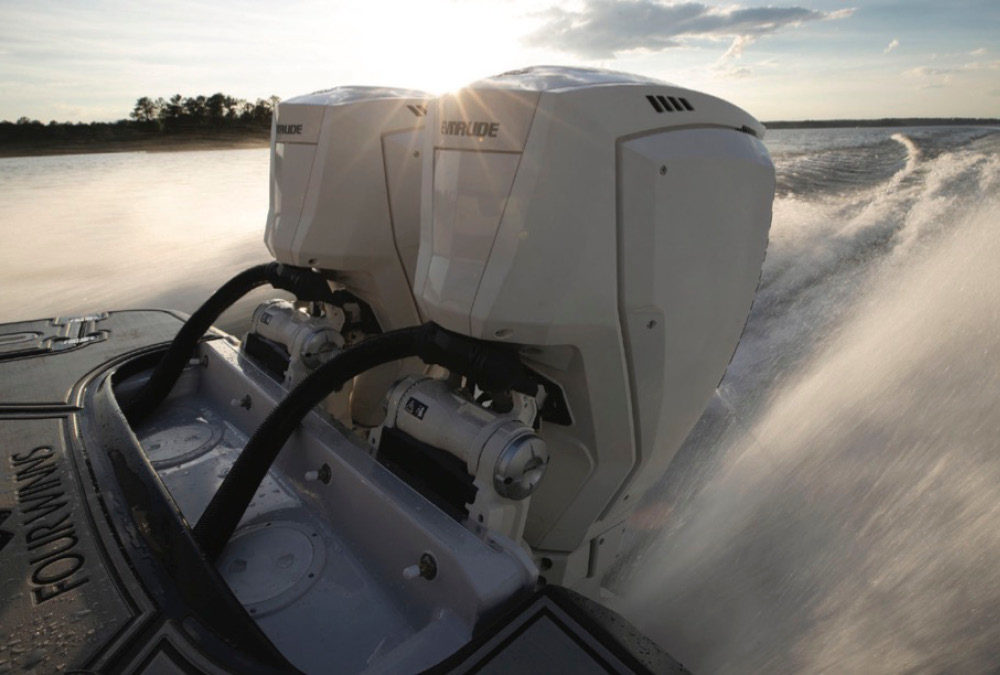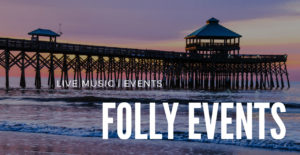Evinrude’s new two-stroke isn’t your granddad’s smoky engine
by Stratton Lawrence | Special to The Current
How many drinks does it take for me to consider buying an American-made two-stroke engine? The answer—to change my opinion on the prospect, at least—is an open bar and a posse of passionate Midwesterners.
The invite to Evinrude’s media gathering and engine release event came in late April — two days at the Charleston Harborside Resort filled with boat demos, nearshore fishing and generous buffets. The PR agent stated her case— “Evinrude is committed to 2-stroke technology when the rest of the outboard industry has gone to 4-strokes and can prove that their new engines are cleaner than all the competition’s 4-strokes, but nobody believes it!”
I sure didn’t. I’m the frustrated owner of a 50-hp Johnson (Evinrude’s former brother-in-law) that hasn’t seen the water since I bought it last summer. An impeller replacement turned into $800 blown with a Folly-based mobile mechanic on a stuck screw extraction and carb rebuild (tip: if you’re going to pay the same hourly rate you would at a fully outfitted shop, trailer your boat to a shop), followed by the discovery of a leaking upper crankshaft seal. I have a four-month-old daughter and a crazy two-year-old, so that engine is still sitting in the yard on an otherwise sharp-looking 16-foot Sea Hunt, not going anywhere fast on Facebook Marketplace.
Given that ill-fated experience, my thinking mirrored the majority of Charleston’s boat owners’. Walk the docks at any Lowcountry marina, and it’s Yamaha four-stroke ubiquity, with a Mercury or two splashed in for color. Yamahas are the Toyota Tacoma of outboards— they work, they hold up, and it’s not hard to find parts or a knowledgeable wrench slinger. It’s far more likely that the dude clogging up the ramp, belching white smoke with an engine that won’t start, is turning over a two-stroke.
The four-stroke guys quietly glide past them and go fishing. So why consider anything else?
After two days of cruising the harbor under American power, I started to second-guess my assumptions. Evinrude claims that their new E-TEC G2 models are the cleanest, most efficient two-stroke engines ever manufactured, meaning your gas tank goes further and environmental impact is lessened. They’re also light — if you scrape an oyster bed or shallow mud, they’ll pop your boat out quickly and get you on your way.
Then there’s maintenance — E-TECs only require service every five years or 500 hours. If you park your boat for a season, a storage setting automatically double oils the cylinder walls to keep salt out. “When you’re ready to go out again, you simply turn the key and you’re boating,” says Eric Olson, a professional fisherman from Red Wing, Minnesota. “It’s a protection that nobody else can offer.”
Olson also emphasizes the five-year corrosion guarantee on the Wisconsin-assembled motor. “They’re not skimping on the aluminum, they’re not skimping on the fasteners, they’re not skimping on the anodes,” Olson claims, over bourbon and gingers on the deck at Vickery’s. “It’s a less-serviced engine that’s still a higher- performing engine.”
Adam Vanderveen, Evinrude’s Marketing Communications Manager, chimes in. “Most folks here will recommend a four-stroke Yamaha because that’s what you see on the dock. It’s a safe choice for most people. They look around and say, ‘If that’s what everybody else has, that’s probably good enough for me.’ You should get an Evinrude E-TEC if good enough is not good enough for you.”
Sound like a sales pitch? That’s kind of what these events are all about. But given the general disappearance of Evinrude engines around Charleston over the last decade, we’re a wise market to well, market to.
Evinrude’s parent company, BRP, builds Sea- Doos, making them the largest manufacturer of boat hulls in the country. BRP also recently acquired Alumacraft and Manitou. My smoothest ride of the week—even on a windy, choppy day in the harbor—was on a tri-hull Manitou pontoon boat powered by a 200 hp Evinrude that hit 52 mph as we cruised under the Ravenel Bridge. My fiberglass-center-consoles bias was ripped apart by a pontoon boat powered by a two- stroke engine.
The next morning, we rode past the jetties to bottom fish the nearshore reefs, catching (and releasing) a plentiful but undersized stock of black sea bass, croaker and whiting. Evinrude’s blue honeycomb-wrapped Scout, powered by dual 200 hp outboards, handled the chop with strength and style.
Add to that the convincing testimonials of Evinrude’s pro captains, tested by an open bar’s truth serum, and I’m a newfound believer in American new-school two-stroke technology. If I could only unload the old-school American two- stroke I already have.


